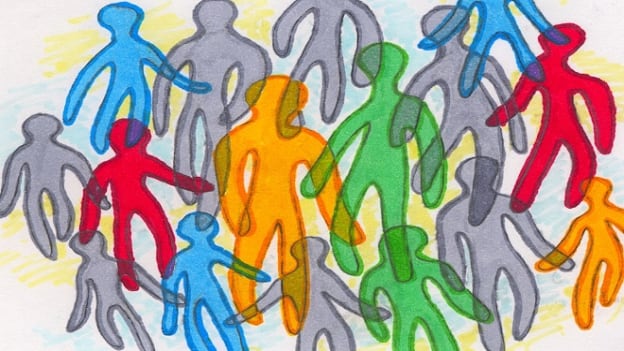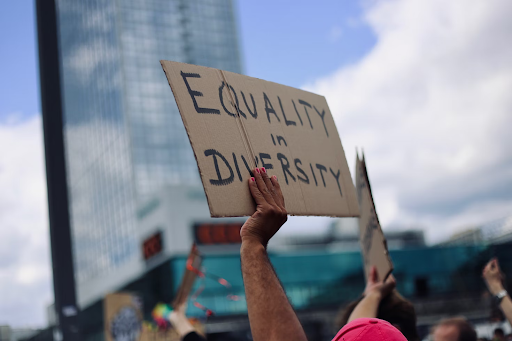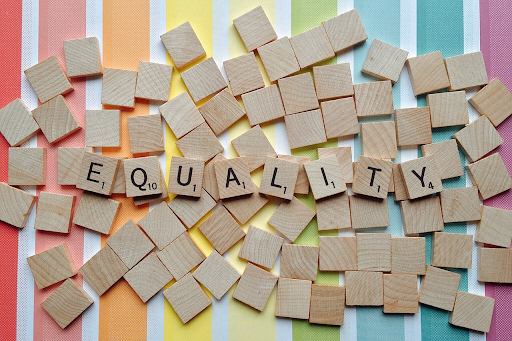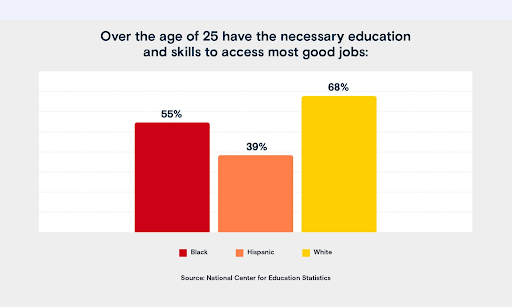What underrepresented employees are and 5 ways you can advocate for them

The unspoken truth of the workplace is that we don’t do enough to make minorities and women feel welcome. As we grow more aware of the blatant inequality in society, we have a greater responsibility for ensuring respect and inclusion for all in our offices.
Underrepresented employees have systematically faced discrimination because of a myriad of factors, including unconscious bias and policies. Leadership can’t turn a blind eye to this problem because it keeps the underrepresented groups from realising their true potential.
Intent won’t fix bias alone. Diversity, equity, and inclusion (DEI) need to be a business priority so that leaders can assess the deterrents of equal opportunity. Companies need to actively hire underrepresented talent and ensure their career advancement isn’t limited by their gender or ethnicity.
In a recent survey, 88% of HR leaders revealed their organisations couldn’t successfully increase diverse representation. This needs to change, and annual unconscious bias and gender equality training aren’t enough. Bias has to be mitigated at the deepest levels, and organiational factors have to be addressed to reset how underrepresented talent is advanced.

Who are underrepresented employees?
Underrepresented employees are those who have been marginalised in society and include people of colour, indigenous people, LGBTQ+ employees, and women. Historically, oppressed individuals face many challenges in the workplace. These are the barriers that they’re forced to overcome:
- Educational gaps because of the lack of access to higher education.
- Lack of representation in corporate leadership: just 6.6% of Fortune 500 CEOs are women.
- Unconscious bias: bias among the leadership prevents underrepresented groups from achieving their best. Because of their history of discrimination, an unconscious bias also exists among underrepresented demographic groups that leads them to view their teams negatively. They internalise negative expectations, and this affects performance.
- Lack of access for disabled employees: this is critical because underrepresented people are more likely to face physical or mental challenges. Systemic inequalities create a health burden and impact performance.
Considering how many employers are now managing a remote workforce, there is an even greater need to understand the unique hurdles every employee from the underrepresented population has to face. This creates a need for programs and policies that consider the challenges that push employees a step back and how you can bring them forward with you.

Holistically address the well-being and special needs of underrepresented employees through these five actions:
Mentorship and sponsorship
Mentorship is an interesting way to engage underrepresented employees. It creates a community and even becomes an opportunity to learn and grow. Mentorship programs help foster meaningful relationships among co-workers. You can recruit diverse leaders as mentors so you can drive diversity and inclusion at all levels.
Lack of development opportunities keeps many underrepresented employees from growing. With mentorship programs, you can provide mentors and sponsors with the tools and resources that are needed to identify development gaps. Sponsors who advocate on behalf of them and become true allies will dramatically increase an employee’s chances of growth.
Diversity-specific sponsorship programs can help underrepresented employees have the same access to sponsorship as their peers. It increases their relationship currency and creates greater equality.
With technology advancing exponentially, mentorship programs can be across time zones. This helps leaders and employees from different countries interact and learn from each other and increases digital employee engagement.
Train leaders
If you want your leaders to advocate for the marginalised, teach them how to do it. Train them in engaging diverse groups and understanding different backgrounds. Managing cultures in the workplace is a science that needs to be mastered if you want your teams to work together effectively and if you want to be fair to every employee.
As companies look to achieve their DEI goals, you’ll have a diverse employee population n the office but also leaders with unconscious bias who are ill-equipped to deal with a diverse team. Invest in your leadership to provide them with the resources needed to adapt to diverse environments and promote a culture of continuous learning.
45% of employees’ experiences of workplace inclusion depend on their manager’s inclusive behaviours. While DEI is everyone’s responsibility, it’s the leadership that will set the tone for how critical it is to the organisation. They need to stand up for the underrepresented when needed and be available as mentors and advocates. Creating DEI goals as an executive performance measure is a way companies can make their leaders accountable.
Redesign talent processes
As we attempt to mitigate bias, it’s essential to redesign processes at the grassroots level. Consider the corporate ladder broken for underrepresented employees. Unless you fix every rung of the ladder from the bottom, they’ll still struggle to reach the top. While this requires significant effort, it’s the most effective way to ensure you can create equal opportunities.
To embed inclusion in your hiring and performance management process, challenge your managers to accommodate diverse talent. Leaders need to reevaluate their performance management system and redefine the definition of productivity.
Your HR policies should consider the special circumstances of minorities. Flexible working hours should be made the norm in workplaces so that employees don’t feel like they’re being granted an extraordinary privilege when they need flexibility in their work schedules.
Integrate diversity, equity, and inclusion into your company culture
Celebrating diversity once a year isn’t enough to make marginalised employees want to stay at your company long-term. Your promises to them should have action plans so your commitment can be proved. Think about DEI as something as essential as your sales targets, SEO audits and customer analytics. Like how the entire organisation works to achieve your annual revenue target and customer satisfaction scores, everyone should be committed to your DEI goals.
You can ensure the representation of minorities through regular activities that help them feel recognised. You can weave elements of different cultures into daily life at your company.
This can be as simple as including music from different countries at an office party so that everyone can enjoy and learn about other cultures as well. Your team communication tool can have emojis of people of colour. Working with minority-owned businesses can also help your own underrepresented employees feel represented and respected.

Provide access to education
Lack of quality education is a major reason for minorities not making it big in the corporate world. The financial burden of continuing education is too high for most people wanting to advance their qualifications. Workforce education programs can help such employees by paying for their tuition.
When you close the educational gap, employees can compete on merit alone. Education is an equaliser, and it can level the playing field. For the underrepresented population, it can lead to professional success, stack the odds in their favour and lead to equity in the workplace.
Say, to improve organisational performance, you decide to install multiple software in your organisation like warehouse stock control software, order management software, and even enterprise software. Intense training is required to use this software. Invest in an underrepresented employee for such training. You’ll improve their skill set and give them a chance to be recognised as an expert.

Celebrate Difference
Workplace diversity is about creating a value system that respects and acknowledges every employee for their work and commitment regardless of gender or ethnicity. A workplace that’s culturally integrated has employees who thrive under a common purpose. Recognise your differences, and unite under the obligation to give your best to your company.
A true celebration of inclusion and diversity recognises that we can all contribute differently, and no approach is better than the other. A female B2B marketing specialist might not sit late hours for drafting the marketing strategy because she has to go home to her kids. There’s no reason, however, to doubt her competence in creating a stellar marketing campaign.
Consider the entirety of the employee lifecycle in developing a thriving and diverse workforce. You should be shaping careers over jobs. When you take steps in the right direction to foster inclusivity, not only will you be able to retain diverse talent, you’ll also attract it.
This article was originally published in March 2022.
















